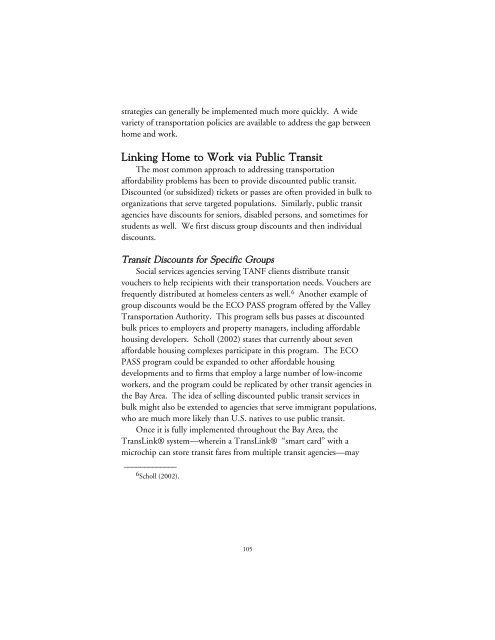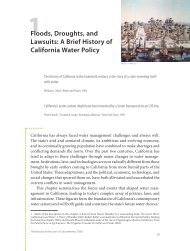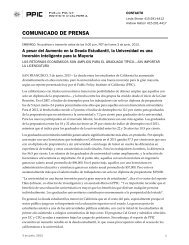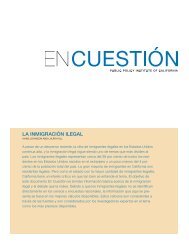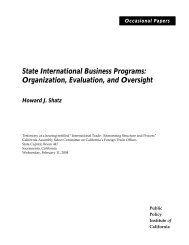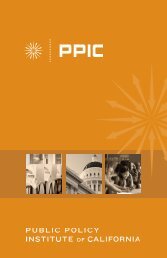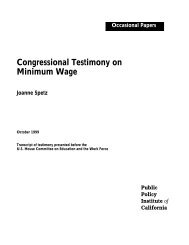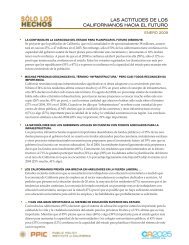Transportation Spending by Low-Income California Households ...
Transportation Spending by Low-Income California Households ...
Transportation Spending by Low-Income California Households ...
Create successful ePaper yourself
Turn your PDF publications into a flip-book with our unique Google optimized e-Paper software.
strategies can generally be implemented much more quickly. A wide<br />
variety of transportation policies are available to address the gap between<br />
home and work.<br />
Linking Home to Work via Public Transit<br />
The most common approach to addressing transportation<br />
affordability problems has been to provide discounted public transit.<br />
Discounted (or subsidized) tickets or passes are often provided in bulk to<br />
organizations that serve targeted populations. Similarly, public transit<br />
agencies have discounts for seniors, disabled persons, and sometimes for<br />
students as well. We first discuss group discounts and then individual<br />
discounts.<br />
Transit Discounts for Specific Groups<br />
Social services agencies serving TANF clients distribute transit<br />
vouchers to help recipients with their transportation needs. Vouchers are<br />
frequently distributed at homeless centers as well. 6 Another example of<br />
group discounts would be the ECO PASS program offered <strong>by</strong> the Valley<br />
<strong>Transportation</strong> Authority. This program sells bus passes at discounted<br />
bulk prices to employers and property managers, including affordable<br />
housing developers. Scholl (2002) states that currently about seven<br />
affordable housing complexes participate in this program. The ECO<br />
PASS program could be expanded to other affordable housing<br />
developments and to firms that employ a large number of low-income<br />
workers, and the program could be replicated <strong>by</strong> other transit agencies in<br />
the Bay Area. The idea of selling discounted public transit services in<br />
bulk might also be extended to agencies that serve immigrant populations,<br />
who are much more likely than U.S. natives to use public transit.<br />
Once it is fully implemented throughout the Bay Area, the<br />
TransLink® system—wherein a TransLink® “smart card” with a<br />
microchip can store transit fares from multiple transit agencies—may<br />
_____________<br />
6 Scholl (2002).<br />
105


